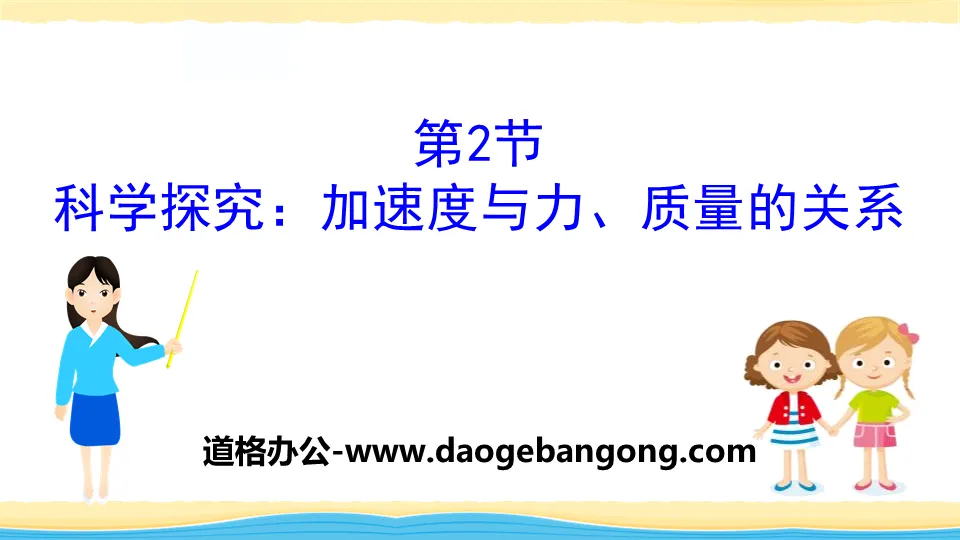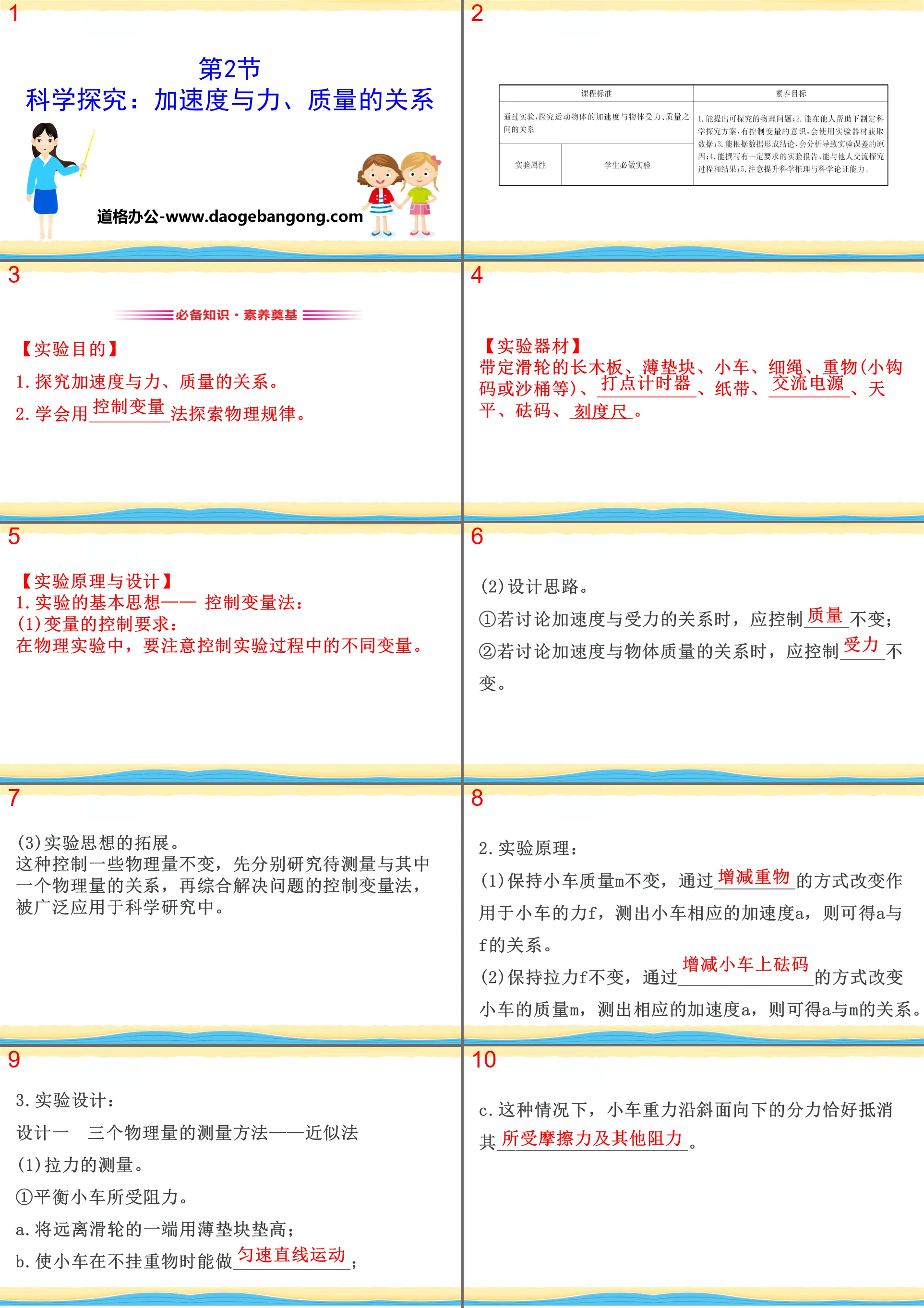People's Education Edition Physics for Grade 8, Volume 2
People's Education Edition Physics for Grade 8, Volume 1
People's Education Edition Ninth Grade Physics Complete Book
Shanghai Science Edition Ninth Grade Physics
Shanghai Science Edition 8th Grade Physics
Lu Jiao Edition Ninth Grade Physics Volume 2
Beijing Normal University eighth grade physics volume one
Beijing Normal University Ninth Grade Physics Volume 1
Lu Jiao Edition Ninth Grade Physics Volume 1
Lu Ke Edition High School Physics Compulsory Course One
Guangdong and Shanghai Edition Ninth Grade Physics Volume 1
People's Education Press High School Physics Compulsory Course II
Beijing Normal University Ninth Grade Physics Volume 2
Lu Jiao Edition Eighth Grade Physics Volume 2
Guangdong and Shanghai Edition Ninth Grade Physics Volume 2
Lu Jiao edition eighth grade physics volume 1

| Category | Format | Size |
|---|---|---|
| Lu Ke Edition High School Physics Compulsory Course One | pptx | 6 MB |
Description
"The Relationship between Acceleration, Force and Mass" Newton's Laws of Motion PPT teaching courseware
Part 1: Essential knowledge and foundation of literacy
【Purpose】
1. Explore the relationship between acceleration, force and mass.
2. Learn to use ________ method to explore the laws of physics.
【experiment equipment】
Long wooden boards with fixed pulleys, thin pads, trolleys, strings, weights (small hooks or sand buckets, etc.), ___________, paper tape, _________, scales, weights, _______.
[Experimental Principle and Design]
1. The basic idea of the experiment - controlled variable method:
(1) Variable control requirements:
In physical experiments, attention should be paid to controlling the different variables during the experiment.
(2) Design ideas.
① When discussing the relationship between acceleration and force, _____ should be controlled unchanged;
②When discussing the relationship between acceleration and object mass, _____ should be controlled unchanged.
(3) Expansion of experimental ideas.
This control variable method, which controls some physical quantities unchanged, first studies the relationship between the physical quantity to be measured and one of the physical quantities, and then comprehensively solves the problem, is widely used in scientific research.
2. Experimental principle:
(1) Keep the mass m of the car constant, change the force F acting on the car through ________, and measure the corresponding acceleration a of the car, then the relationship between a and F can be obtained.
(2) Keep the pulling force F constant, change the mass m of the car through _______________, and measure the corresponding acceleration a, then the relationship between a and m can be obtained.
3. Experimental design:
Design 1. Measurement method of three physical quantities - approximation method
(1) Measurement of tensile force.
① Balance the resistance of the trolley.
a. Use a thin pad to pad the end away from the pulley;
b. Make the car capable of _____________ when no heavy objects are attached;
c. In this case, the downward component of the car's gravity along the slope exactly offsets its _______________.
② Make the pulling force on the car equal to the gravity of the heavy object.
Only when _______________________ can we approximately think that the gravity of the heavy object is equal to the pulling force of the car, that is, F≈m′g.
(2) Measurement of the quality of research objects.
①Use a balance to measure the mass m0 of the empty car and the mass m′ of the heavy object;
②The mass of the research object is equal to the sum of the mass m0 of the empty car and the mass of the weight.
(3) Measurement of acceleration.
①Principle:
A car placed on a long wooden board accelerates uniformly under the constant tension of the string.
For linear motion, take the displacement of two adjacent segments within equal time, satisfying
Δx=aT2;
② Use the scale to measure_______________;
③Use _______ to calculate the corresponding acceleration.
PPT on the relationship between acceleration and force and mass, part 2: key abilities and quality formation
【experiment procedure】
1. Experimental steps
1. Install experimental equipment:
Place the trolley on a wooden board with fixed pulleys, pass the paper tape through the dotting timer and hang it on the tail of the trolley.
2. Balance friction:
Use thin pads to raise the wooden board and adjust its inclination until the dots printed by the dot timer on the paper tape are evenly distributed when the car is moving.
3. Hang heavy objects:
Hang a heavy object on one end of the string, and tie the other end to the front end of the car through a fixed pulley.
4. Collect paper tape data:
After the car approaches the dotting timer, the dotting timer is started. Later, the car is released from rest. The dotting timer prints a series of points on the paper tape, and the acceleration of the car is calculated based on this.
5. Change the force on the car:
(1) Keep the mass of the trolley unchanged and increase the mass of the heavy object by increasing the number of small hooks (the total mass is still much smaller than the mass of the trolley);
(2) Repeat step 4, do several more experiments, and record the number of the corresponding paper tape and the total gravity of the hooked code m2g, m3g...
6. Change the quality of the car:
(1) Keep the weight (the tension on the trolley) unchanged, change the mass of the trolley by increasing or decreasing the weight on the trolley, turn on the power and let go of the trolley, and record the movements of the trolley with paper tape. Remove the paper tape and mark the number and the total mass M1 of the trolley and weight on the paper tape;
(2) Continue to add weights to the trolley, repeat the previous steps, and do several more experiments. Mark the number and the total mass of the trolley and weights M2, M3... on the paper tape obtained from each experiment.
【Think·Discussion】
(1) Is it necessary to hook the code during the operation of "balancing" friction? Why? (scientific reasoning)
Tip: During the experimental operation, in order to ensure that the pulling force of the string is the resultant force of the trolley, no hook code is required during balancing.
(2) During the experiment, from what aspects should we pay attention to the safety issues of operation? (Scientific attitude and responsibility)
Tips: ① When using the dot timer, pay attention to the safety of electricity;
② Pay attention to avoid falling of the trolley, weights and heavy objects, causing damage to the equipment or injury to the body.
PPT on the relationship between acceleration and force and mass, part 3: Experimental analysis·Literacy transfer
Type 1 Experimental Operation
[Typical Example 1] Use the device as shown in the figure to study the relationship between the acceleration a of the car and the mass m of the car when the force F is constant. The experimental steps designed by a student are as follows:
A. Use a balance to weigh the mass of the trolley, pallet and the weights contained therein;
B. Install the experimental equipment according to the diagram;
C. Tie the light rope to the trolley and hang the pallet and heavy objects around the fixed pulley;
D. Connect the electromagnetic dotting timer to the 6 V battery, turn on the power, let go of the car, the dotting timer will mark a series of dots on the paper tape, and mark the weight of the car on the paper tape;
E. Keep the mass of the pallet and the weight unchanged, increase the number of weights on the trolley, record the m value after each increase, and repeat the above experiment;
F. Analyze each paper strip, measure and calculate the acceleration value;
G. Make a-m relationship image, and determine the relationship between a and m from the image.
(1) The important experimental step that the student missed is ___________, which should be ranked after the _______ step of the experiment.
(2) In the above steps, the error is _______________, so ______________ should be changed to _______________.
(3) In the above steps, the inappropriate handling is _____, and _____ should be changed to _______.
【Problem Solving Exploration】
(1) What are the power requirements of the electromagnetic dotting timer?
Tips: 4~6 V AC.
Keywords: Free download of PPT courseware of Lu Ke Edition High School Physics Compulsory Course One, PPT download of the relationship between acceleration and force and mass, PPT download of Newton's Laws of Motion, .PPT format;
For more information about the PPT courseware "Newton's Laws of Motion: The Relationship between Acceleration and Force and Mass", please click the Newton's Laws of Motion PPT: The Relationship between Acceleration and Force and Mass PPT tag.
"The Relationship between Acceleration, Force and Mass" Newton's Laws of Motion PPT download:
"The Relationship between Acceleration, Force and Mass" Newton's Laws of Motion PPT Download Part One Content: [Discipline Literacy Objectives] Scientific Inquiry: 1. Learn to use the controlled variable method to study physical laws. 2. Master the method of using images to process data. 3. Explore acceleration, force, and mass..
"The Relationship between Acceleration, Force and Mass" Newton's Laws of Motion PPT courseware:
"The Relationship between Acceleration, Force and Mass" Newton's Laws of Motion PPT Courseware Part One: Experimental Basics Experiment Purpose 1. Explore the relationship between acceleration, force and mass. 2. Learn to use the control variable method to explore physical laws. Experimental equipment: wooden board with fixed pulley, thin...
"The Relationship between Acceleration, Force and Mass" Newton's Laws of Motion PPT:
"The Relationship between Acceleration, Force and Mass" Newton's Laws of Motion PPT Part One Content: Clarify the Principle 1. Purpose of Experiment 1. Explore the relationship between acceleration, force, and mass. 2. Learn to use the controlled variable method to explore physical laws. 2. Experimental equipment Wooden frame with fixed pulley...
File Info
Update Time: 2024-11-07
This template belongs to Physics courseware Lu Ke Edition High School Physics Compulsory Course One industry PPT template
"The Relationship between Acceleration, Force and Mass" Newton's Laws of Motion PPT teaching courseware Simple campus recruitment activity planning plan summary enterprise and institution recruitment publicity lecture PPT template is a general PPT template for business post competition provided by the manuscript PPT, simple campus recruitment activity planning plan summary enterprise and institution recruitment promotion Lecture PPT template, you can edit and modify the text and pictures in the source file by downloading the source file. If you want more exquisite business PPT templates, you can come to grid resource. Doug resource PPT, massive PPT template slide material download, we only make high-quality PPT templates!
Tips: If you open the template and feel that it is not suitable for all your needs, you can search for related content "The Relationship between Acceleration, Force and Mass" Newton's Laws of Motion PPT teaching courseware is enough.
How to use the Windows system template
Directly decompress the file and use it with office or wps
How to use the Mac system template
Directly decompress the file and use it Office or wps can be used
Related reading
For more detailed PPT-related tutorials and font tutorials, you can view: Click to see
How to create a high-quality technological sense PPT? 4 ways to share the bottom of the box
Notice
Do not download in WeChat, Zhihu, QQ, built-in browsers, please use mobile browsers to download! If you are a mobile phone user, please download it on your computer!
1. The manuscript PPT is only for study and reference, please delete it 24 hours after downloading.
2. If the resource involves your legitimate rights and interests, delete it immediately.
3. Contact information: service@daogebangong.com
"The Relationship between Acceleration, Force and Mass" Newton's Laws of Motion PPT teaching courseware, due to usage restrictions, it is only for personal study and reference use. For commercial use, please go to the relevant official website for authorization.
(Personal non-commercial use refers to the use of this font to complete the display of personal works, including but not limited to the design of personal papers, resumes, etc.)
Preview










